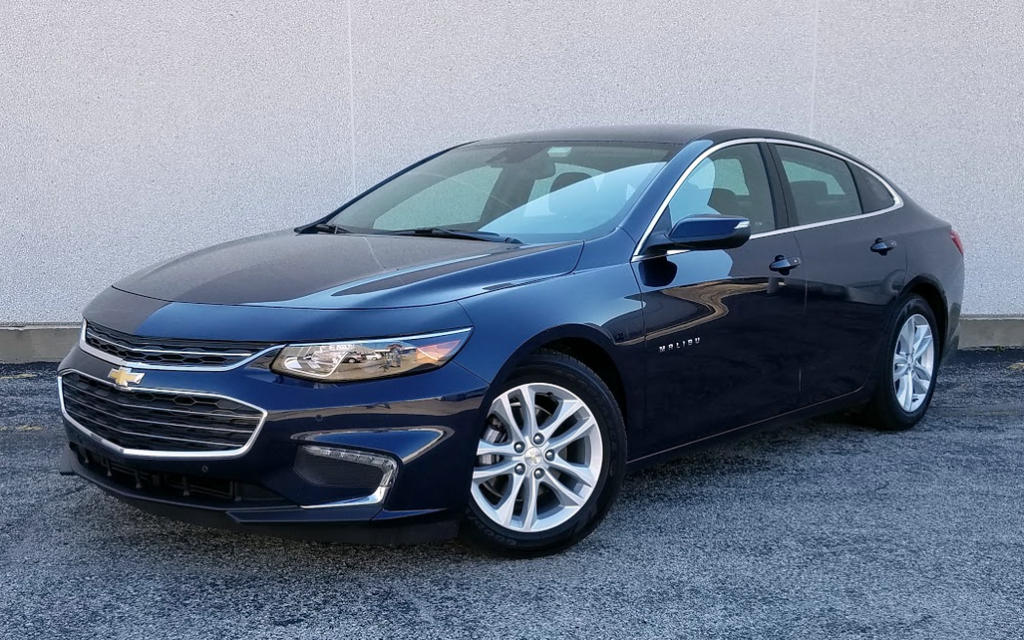
Class: Midsize Car
Miles Driven: 110
Fuel Used: 2.5 gallons
| CG Report Card | |
|---|---|
| Room and Comfort | B |
| Power and Performance | B- |
| Fit and Finish | B |
| Fuel Economy | A+ |
| Value | A |
| Report-card grades are derived from a consensus of test-driver evaluations. All grades are versus other vehicles in the same class. Value grade is for specific trim level evaluated, and may not reflect Consumer Guide's impressions of the entire model lineup. | |
| Big & Tall Comfort | |
| Big Guy | B+ |
| Tall Guy | A |
| Big & Tall comfort ratings are for front seats only. "Big" rating based on male tester weighing approximately 350 pounds, "Tall" rating based on 6'6"-tall male tester. | |
Real-world fuel economy: 44.0 mpg
Driving mix: 80% city, 20% highway
EPA-estimated fuel economy: 47/46/46 (city/highway/combined)
Base price: $27,770 (not including $875 destination charge)
Options on test car: Driver Confidence Package ($1195), Convenience & Technology Package ($895)
Price as tested: $30,735
Quick Hits
The great: Fuel economy
The good: Room and comfort
The not so good: Single, mid-tier trim level
Read why the 2017 Chevrolet Malibu is a Consumer Guide Best Buy
Damon Bell
With its ground-up redesign for 2016, Chevrolet’s mainstream midsize sedan got a heck of a lot better. Chief among the improvements was a much more spacious back seat, a laundry list of great new technology features, and—finally—a real-deal gas/electric hybrid model. We liked the new Malibu so much that we named it one of our midsize-car Best Buy picks for 2017.
Not surprisingly, the 2017 Malibu is little changed; the base radio gets GM’s Teen Driver monitoring system and Apple CarPlay/Android Auto functionality, and the Premier model gets a 9-speed automatic transmission in place of an 8-speed. You can check out our 2016 Chevrolet Malibu First Spin report here and our test drive of the nicely equipped 2LT model here for more details on the Malibu itself. We’ll focus here on the specifics of our Hybrid test vehicle.
First Spin: 2017 Chrysler Pacifica Hybrid
The Malibu Hybrid shares some of its powertrain components with the new-for-2016 Chevrolet Volt and the new-for-2017 Bolt EV. It’s powered by a direct-injection 1.8-liter 4-cylinder engine mated to a two-motor drive unit for a total output of 182 horsepower and 277 lb-ft of torque. Chevy says that the lithium-ion battery system can power the car at speeds up to 55 mph on electricity alone. The Malibu Hybrid also marks the first use of Chevrolet’s Exhaust Gas Heat Recovery (EGHR) system, which uses exhaust heat to warm the engine and cabin.
In our tests, the Malibu Hybrid’s acceleration was pleasingly zippy. The electric motors provide snappy off-the-line throttle response, and passing power is sufficient as well. The gas engine and electric motor are nicely integrated, so acceleration and deceleration are smooth and relatively seamless. The brake pedal can often feel unnatural and difficult to modulate in gas/electric hybrids and EVs, but the Malibu Hybrid’s brakes operate in a linear fashion, which makes it easier to come to a smooth stop.
First Spin: 2017 Honda Accord Hybrid
EPA fuel-economy numbers are 47 mpg city/46 highway/46 combined. With a majority of city driving in our test, we averaged 44 mpg… a bit off of the estimate, but still impressive for midsize sedan with this kind of power—and notably better than the 2017 Toyota Camry Hybrid XLE we tested recently.
The Malibu Hybrid comes standard with a decent selection of equipment, but it’s not quite what you’d call generously equipped. Included are 17-inch aluminum wheels, keyless entry and starting, dual-zone climate control, MyLink infotainment system with a 7-inch touchscreen.
Our tester was outfitted with two option packages. The $1195 Driver Confidence Package adds automatic high-beam headlamps, front and rear park assist, forward collision alert with front low-speed automatic braking, rear cross-traffic alert, lane keep assist, and lane-change alert with side blind spot alert. The $895 Convenience and Technology Package includes remote vehicle start, auto-dimming rear-view mirror, an upgraded 8-inch color touchscreen, wireless device charging, a 110V power outlet, leather-trimmed steering wheel and shift knob, enhanced multi-color driver information display, and USB charging ports.
The interior ambiance of our test vehicle was pleasant, if a bit on the utilitarian side. The cloth upholstery is certainly nothing fancy, but some nice satin-finish trim livens things up. Even if it’s not the ritziest place to be, the Malibu interior is nicely assembled and has a solid, high-quality feel.
Like most of its hybrid-sedan competitors, the Malibu Hybrid’s battery pack eats up trunk space–regular gas-engine Malibus have 15.8 cubic feet, the Hybrid just 11.6. So, cargo versatility is compromised, but at least there are still fold-down rear seatbacks and a cargo pass-through (which is notably larger and more usable than the Toyota Camry Hybrid’s). You should be able to slide a plastic toboggan or two through there.
The Malibu Hybrid is essentially equipped to the level of a Malibu LT model, which starts at $25,020. The Hybrid’s base price is $27,770—a premium of $2750 over the LT. That’s not an insubstantial amount of money, but the Hybrid delivers truly impressive economy improvements (44 mpg versus 24 mpg in our Malibu 2LT test vehicle in similar driving conditions) with few compromises. If the math pencils out for you, the Chevrolet Malibu Hybrid is a great choice.
Test Drive: 2016 Toyota Camry Hybrid SE